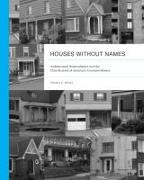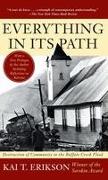Houses Without Names: Architectural Nomenclature and the Classification of America's Common Houses
BücherAngebote / Angebote:
In countless neighborhoods across America, the streets are lined with houses representingno established architectural style. Many of the 80 million homes in the United Statestoday have only loose-fitting, general names like ranch, duplex, bungalow, and flat.Most, however, cannot even be identified by these common names, much less by anarchitectural type such as Colonial, Italianate, or Queen Anne. The few regionallyrecognized vernacular terms-- shotgun, Cape (Cod), three-decker, and the like--remainexceptions rather than the rule. In this innovative, copiously illustrated guide, Thomas C.Hubka considers why most ordinary, working-class houses lack an adequate identifyingnomenclature and proposes new ways to name and classify these anonymous structures, shedding a fresh light on their role in the development of American domestic culture andits housing landscape. Popular, developer-built, tract, speculative, everyday--whatever they are called, these common homes constitute the largest portion of American housing in all regionsand historic periods. Without classification, these dwellings tend to be left out of historiesof American building, neglected in preservation surveys and plans, and ignored when itcomes to considering their impact on American culture. Current methods of interpretingcommon houses need not be replaced, Hubka shows, but only modified to include abroader, more complete spectrum of common dwellings. As Hubka explains, by applyingan order of census and a floor-plan analysis, scholars can adequately characterizethe actual homes in which most Americans live, particularly in recent times after thewidespread growth of suburban homes. Based on years of field observations, measured drawings, and surveys of regionalhouse types, this handbook provides a working vocabulary for the study and appreciationof America¹s common houses and will prove useful to preservationists, academics, andarchitects, as well as owners and residents of America¹s most ubiquitous residences.
Folgt in ca. 15 Arbeitstagen


